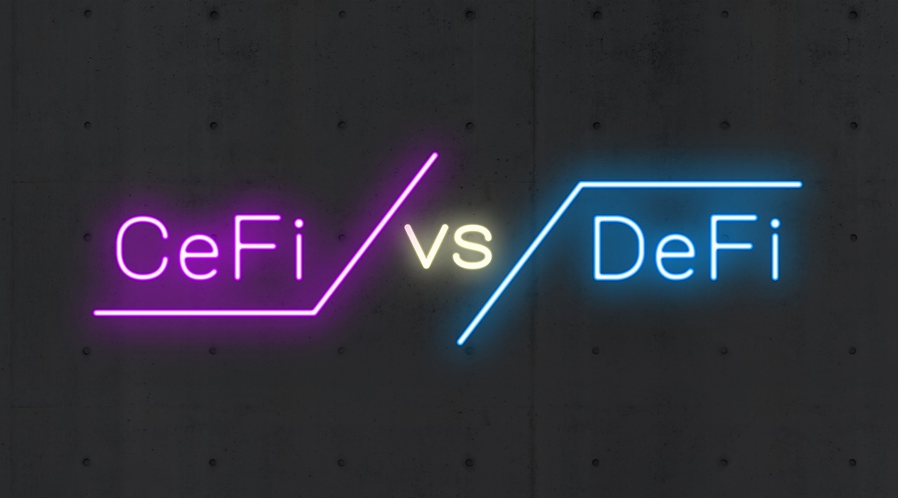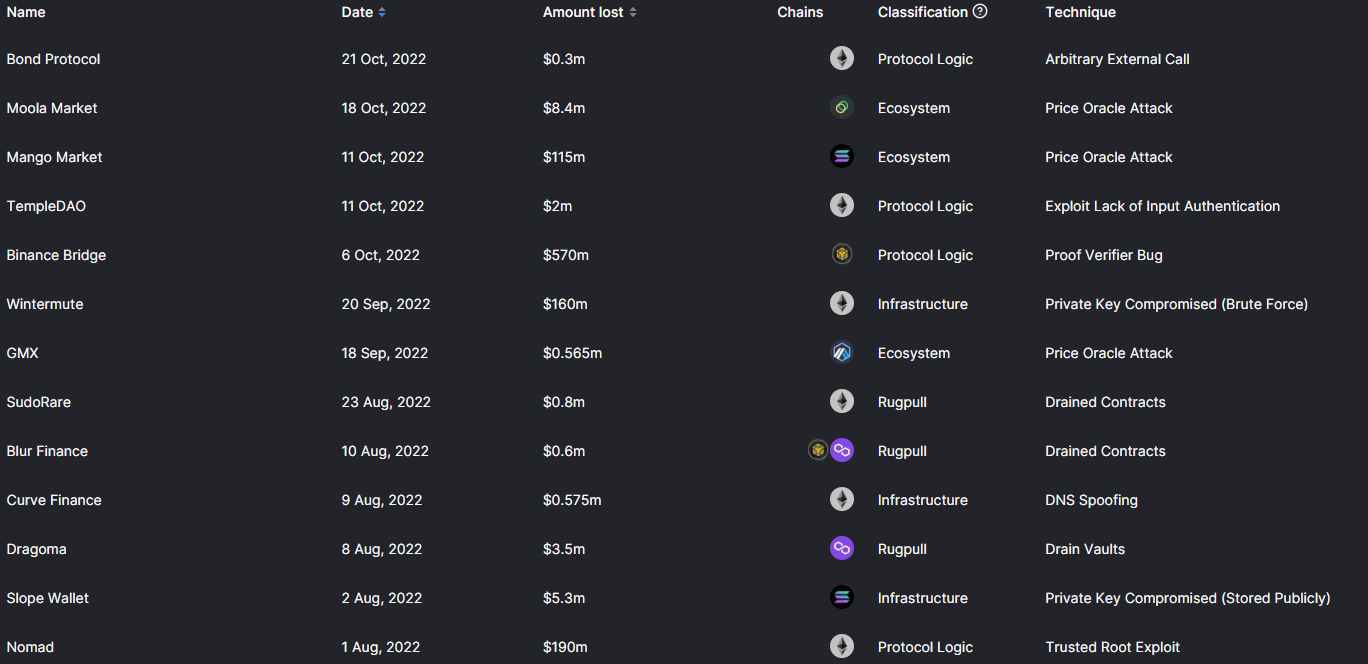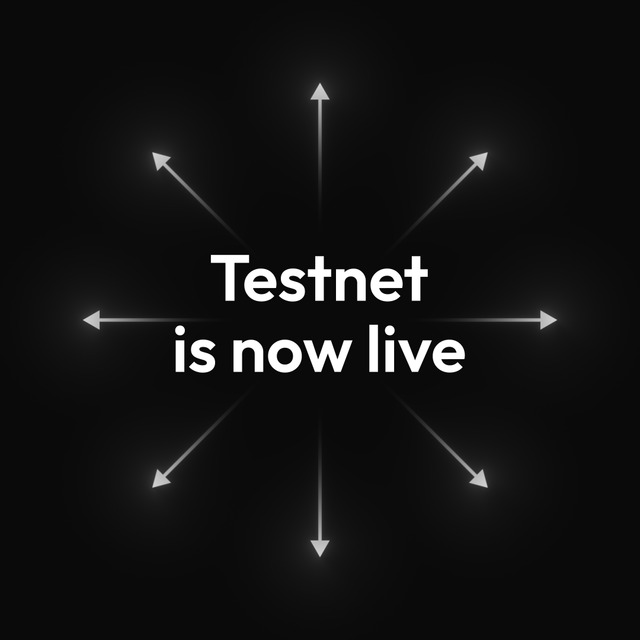Why build DeFi on Cardano
Cardano is one of the most decentralized networks in the cryptocurrency industry. This is extremely important as DeFi has the potential to solve the problems that TradFi and CeFi suffer from. Prominent CeFi companies have gone bankrupt and others...

Cardano is one of the most decentralized networks in the cryptocurrency industry. This is extremely important as DeFi has the potential to solve the problems that TradFi and CeFi suffer from. Prominent CeFi companies have gone bankrupt and others may be facing a similar fate. Some are trying to blame the high volatility of cryptocurrencies and DeFi for the crashes. The reality is that DeFi can protect user assets better than any centralized entity. Satoshi's vision is motivated by the desire to eliminate middlemen and rely on Peer-to-Peer services. Unfortunately, many users still do not understand the point of decentralization and entrust their cryptocurrencies to centralized third parties. This is somewhat understandable, as it is natural to try to use one's own wealth to make a profit. It is important to distinguish well between custodial and non-custodial services. Let's talk about why Defi can protect your assets better than CeFi and why to use the Cardano platform to build DeFi services.
TLDR:
- CeFi companies tries to look like modern companies that advocate decentralization but they are centralized entities taking advantage of the legal vacuum around cryptocurrencies.
- CeFi companies offer promising above-market yields. They are not afraid of utilizing massive leverage in DeFi services.
- Very high leverage, bad human judgment, a lack of transparency, and greed are the real causes of the CeFi problems.
- Rules of DeFi services are programmed through smart contracts that are inherently immutable. Triggering the execution of specific actions is driven by the market, not by the subjective decisions of individuals.
- There have been 13 hacks worth more than $1B in the last 3 months.
- There are time-tested DeFi services, but there are only a very few of them.
TradFi and CeFi business models are very similar
Traditional finance (TradFi) needs intermediaries to function. Retail and institutional investors need to entrust their funds to third parties we are all familiar with. These are banks, insurers, asset managers, brokers, exchanges, etc. Intermediaries offer customers traditional financial services such as payments, borrowing, lending, investing, and insurance. Centralized finance (CeFi) also operates on a centralized finance model just like TradFi. The difference is that CeFi uses cryptocurrencies, digital tokens and DeFi in its business model.
CeFi is basically not much different from TradFi and innovation is minimal on their part. CeFi tries to look like modern companies that advocate decentralization but in reality, they are centralized entities taking advantage of the legal vacuum around cryptocurrencies.
Both TradFi and CeFi rely on subjective human decision-making to manage risk. This is the source of most of the problems that plague these business models. CeFi services take crypto deposits from customers or allow them to buy cryptocurrencies for fiat currency. In both cases, CeFi services are custodians of crypto assets.
They offer safe storage of assets and promising above-market yields. To achieve high yields they use DeFi services and are not afraid of utilizing massive leverage. This strategy usually only works well in a bull market. Once the bear market comes, weak business models collapse like a house of cards. As the value of cryptocurrencies falls, CeFi companies have to face margin calls. This will eventually drive them into insolvency.
I assume you've all heard of the major CeFi companies BlockFi, Celsius, Voyager, Three Arrows Capital, and others. All of them are facing major insolvency issues stemming from the global economic crisis that has been unavoidable for crypto asset values.
It's important to note that DeFi services are not the reason CeFi companies are failing. The customers who chose to use CeFi services are to blame. CeFi companies are dependent on subjective decision-making by individuals, are non-transparent and suffer from all the problems of centralization. Very high leverage, bad human judgment, a lack of transparency, and greed are the real causes of the CeFi problems. Once companies got into trouble, they made it impossible for customers to withdraw their crypto assets.
Problems began to be solved according to the rules of the authorities from the traditional financial world. This means that customers will be waiting a long time for a solution and cannot be sure if they will get their cryptocurrencies back.
CeFi companies go bust and DeFi services continue to operate
Most of the DeFi services that are truly decentralized and their economic models are set up to weather crises continue to work very well and are not going bankrupt.
Let's add that the collapse of the Terra Luna project is due to the bad economic model that many warned about in advance. The project was not very well decentralised and the network could have been shut down.
DeFi is not an automatic solution to all problems and it is naive to think that every service can provide high profits without risk in the long term. Much depends on the economic model designed and the quality of the protocol implementation.
Customers of CeFi services often didn't know that CeFi companies use absurdly high leverage in DeFi services or use projects like Terra Luna. Customers entrusted their funds to a third party and they failed. Maybe if customers had taken care of their own wealth, they would never have used leverage or used shady DeFi projects.
Cryptocurrency holders are greedy and may have been afraid to use DeFi services themselves. It may not be worth it to them. If they had used DeFi services themselves, they might be better off today.
Many current DeFi projects have so far come through the crisis successfully and are withstanding market pressures well. Many think that DeFi is not on solid footing and has structural flaws. The opposite is true. DeFi works exactly as expected.
DeFi is built on decentralized blockchain platforms like Ethereum, Cardano and others. All financial services rules are programmed through smart contracts that are inherently immutable. All rules are 100% executed exactly as written once specific market events occur. Triggering the execution of specific actions is driven by the market, not by the subjective decisions of individuals. The programs replace the role of intermediaries (TradFi and CeFi employees) and manage the risk of financial transactions themselves.
Smart contracts are immutable after deployment and can be managed via on-chain governance. Specific parameters can be changed based on a community vote. The decision is made by the users and those who have skin in the game. This is important, as CeFi employees make decisions about assets that do not belong to them.
Every user of the DeFi service should verify (or trust someone who is able to verify) that the assets can be withdrawn from the service at any time, and that no one can change or stop the smart contract from executing.
The DeFi service will never prevent you from withdrawing your assets unless locking them is part of the terms of service. Users have direct control over their assets and no third party can prevent them from withdrawing them when it matters most, during a crisis. DeFi is transparent and users have access to all on-chain data. Decisions are made based on facts, not assumptions.
These features distinguish DeFi from CeFi. If problems arise, the smart contract protects the user first and foremost, not third parties. For DeFi platforms the highest priority in the liquidation waterfall is the deposits of community members. The risk parameters are codified and no intermediary can suddenly change them in case of problems. That's the power of DeFi.
CeFi users are sad and may have lost their cryptocurrency while DeFi users can continue to use the services just fine. CeFi companies are going bankrupt. DeFi services continue to innovate and grow. The value of cryptocurrencies is dropping, but that doesn't mean there's anything wrong with the technology. On the contrary. The technology continues to work exactly as it did before the crisis and the number of users is growing.
DeFi needs reliability and scalability
Some current DeFi services work very well and are time-tested. Unfortunately, there are very few of them and next to them we can find many projects that have been hacked. Many hacks occur frequently and a bad reputation prevents users from using DeFi more widely. There have been 13 hacks worth more than $1B in the last 3 months. Of these, 6 hacks were on Ethereum and 2 on Solana.

Cardano is still a young platform and the ecosystem is not as large as Ethereum. Having said that, there are already many DeFi services running on the Cardano platform and none have been hacked yet. This is very important from a reputation perspective, as quality is best verified by time. Obviously, this state of affairs will not last forever and sooner or later there will be a team that makes a critical mistake in the contract. It can lead to a hack. It will be important to monitor the ratio between the number of users, the value transferred and the number of hacks. I believe that Cardano will be seen as a platform on which a very secure financial service can be written.
DeFi can't be synonymous with an industry where you can make a lot of money but also lose everything. From a mass adoption perspective, this is undesirable. First and foremost, DeFi must offer reliable services and workable economic models.
Some people think it's good if DeFi grows organically and they are willing to overlook problems. It's similar to the rise of the internet. At this stage, problems with hacks and scams are probably unavoidable. Blockchain technology needs to mature and be as reliable as today's internet services.
Low scalability is another reason why DeFi has failed to catch on en masse. No blockchain project is yet ready for mass adoption. Projects that scale well, like Solana, have trouble with decentralization.
Cardano is being built by the team to maintain a high level of decentralization while still being able to achieve higher scalability. Ouroboros Leios PoS will significantly increase the number of financial operations per second. The IOG team is able to develop a new PoS consensus and upgrade within a year or two. In the next bull run, Cardano will be much better prepared for mass adoption than now.
Many people are impatient and think that if Cardano is not ready for mass use today, it never will be. It takes time to deliver the necessary technology at the best possible quality. Many projects that seemingly outpaced Cardano are now gone (like Terra Luna) or are slowly losing their reputation (like Solana because of the need to reboot the network frequently). While competition is dropping off, the community and network effect of Cardano continues to grow.
DeFi is not CeFi. CeFi was very successful in marketing and attracted many users. The demand from users for financial services related to cryptocurrencies is evident. DeFi must replace CeFi. This requires many sub-steps. As we said, reliability and scalability are a must.
In addition, it is necessary to make it easier for users to navigate between services and to provide assurances that the service they choose is secure. The IOG team wants to build a kind of application market with a security rating. Every contract will go through a security audit if the team wants, and users will see the score. This will allow them to use services that are considered by experts to be decentralised and secure. Some financial services can work much better if the identity of the users is known. Cardano's ecosystem has a plan for this too. Atala PRISM is an existing platform. The Lace wallet will soon allow you to create your own decentralized identity (DID). There are several sub-steps that will ease the way for users to DeFi. DeFi needs to be as simple as downloading the app on your phone.
Writing apps for the Plutus platform can be tricky because the ecosystem is young. For newcomers, it can be difficult to get started and access good sources of information. Haskell can be a barrier for some teams. However, for those who are serious about financial services security and want to build a globally successful service, it's definitely probably the best option at the moment.
Conclusion
DeFi models are driven by immutable smart contracts and react to market events exactly as programmed. In addition, DeFi services are over-collateralized, so funds lent to DeFi are proven to be more secure, as users take priority over third parties when problems arise. In CeFi, deposited assets are abused for high leverage. CeFi employees are greedy and willing to risk the assets of users. Their misjudgment and inability to correctly assess market sentiment can lead to insolvency. Customers often do not know what CeFi companies are doing with their deposits because no one is forcing them to be fully transparent. Unfortunately, the debts of CeFi companies take priority over customers. Thus, users' deposits are always at great risk.
Cryptocurrencies are in a bear market as the entire world faces a financial crisis. A distinction must be made between the decline in the value of crypto assets and the technology behind DeFi. It's also common for company shares to fall during financial crises, and no one worries about something bad happening to Apple or Google, for example. These companies are not going to disappear from the world. When these companies were young, the risk was greater. Today, it is clear that many IT giants will survive this crisis and the values of shares will rise again. Cryptocurrencies are younger, so riskier. On the other hand, the evolution of technology is enormous and the benefits of DeFi are obvious. It makes no sense to worry about the value of ADA coins in a bear market. It's important to look at Cardano as a technology leader.
The best programming talent moving in DeFi's direction. Institutional interest in DeFi continues to grow, and many see a difference between CeFi and DeFi. This is important for the further development of the whole industry.
DeFi definitely offers features that CeFi can never have. This is already true today, but at the same time, it is true that the fear of hacks is real. Users have little choice when it comes to secure and time-tested DeFi services. They can only trust a few apps. Cardano comes on the scene with smart contracts a few years after Ethereum but has the advantage of a very good reputation for security. In the next bull run, Cardano may experience the Ethereum effect, i.e. dramatic growth in user numbers. This will be the best test for DeFi on Cardano.
CeFi brings no innovation. What is innovative is decentralization. Cardano is decentralised and the community takes very good care of this feature. The Plutus platform is well suited for building DeFi, and the IOG team has the plan to increase scalability and other sub-steps for mass adoption of the project. Forget to CeFi and go for DeFi.
Delegate Your Voting Power to FEED DRep in Cardano Governance.
DRep ID: drep12ukt4ctzmtf6l5rj76cddgf3dvuy0lfz7uky08jfvgr9ugaapz4 | We are driven to register as a DRep by our deep dedication to the Cardano ecosystem and our aspiration to take an active role in its development, ensuring that its progress stays true to the principles of decentralization, security, and community empowerment.DELEGATE VOTING POWER!








